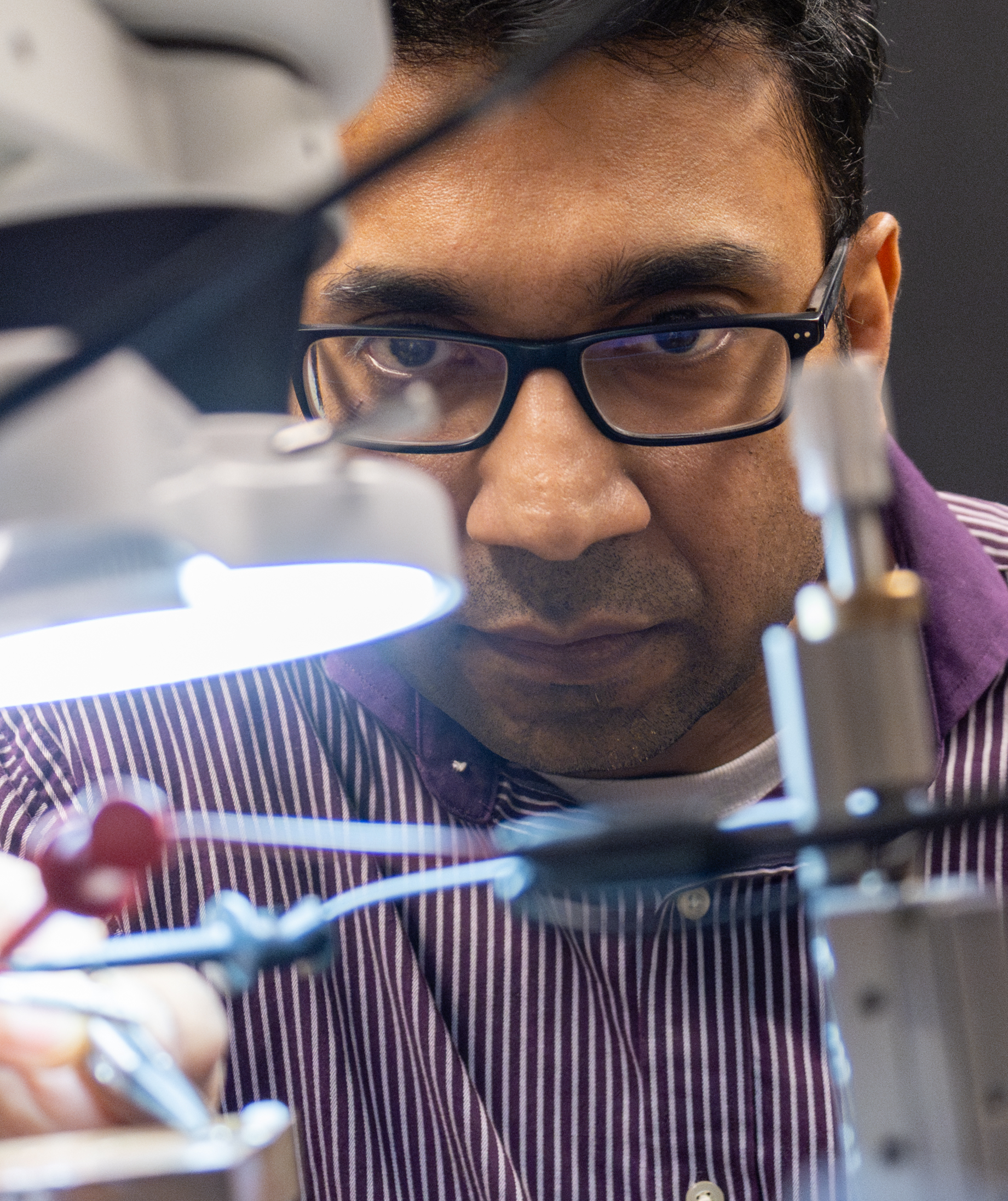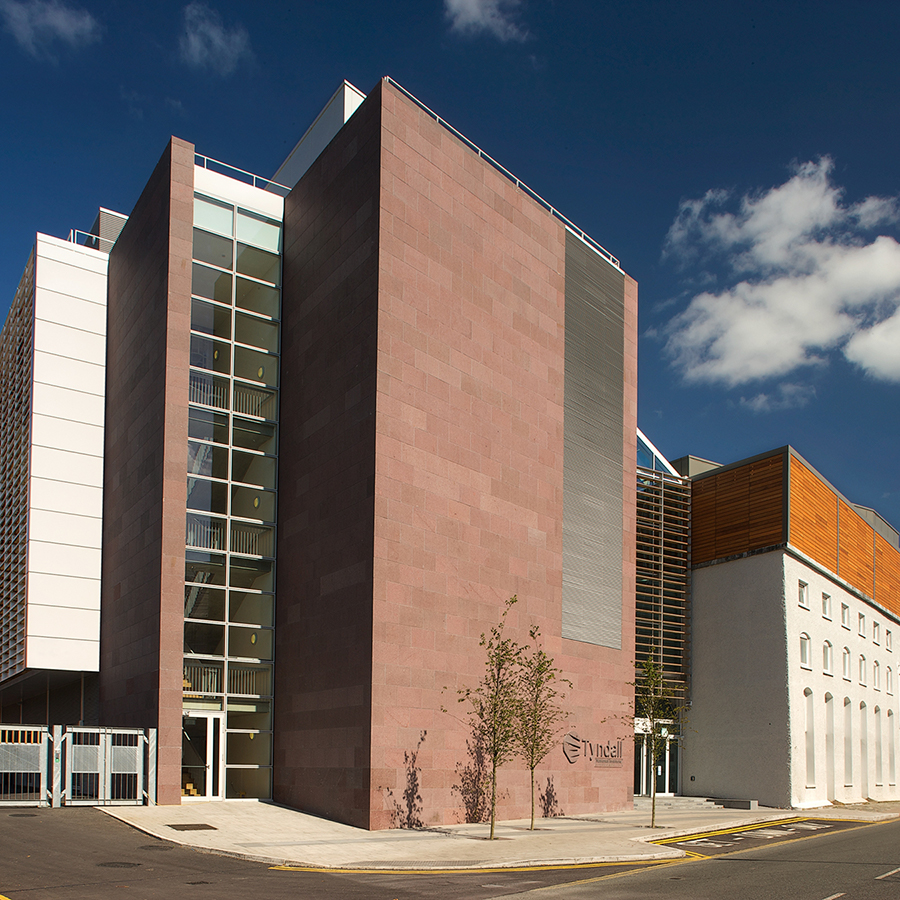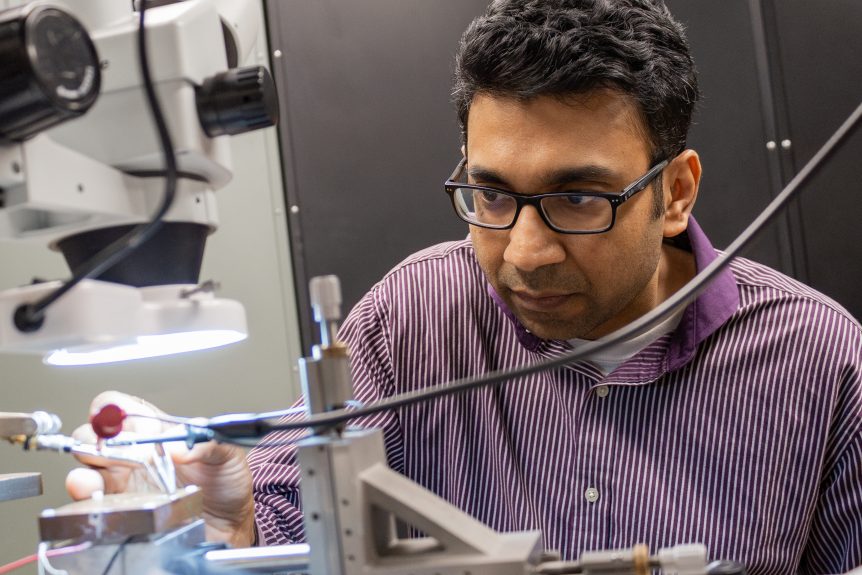The Ohio State University was awarded a significant National Science Foundation (NSF) grant for pioneering research in visible light-wave generation and manipulation. The research has the potential to revolutionize biophotonics with miniaturized, cost-effective photonic circuits that would enhance healthcare diagnostics and treatment.
The $425k U.S.-Ireland partnership VIBRANT (Visible Light-wave Generation and Manipulation through Non-Linear Waveguide Technology) was seeded by the Catalyst Program, jointly operated by Ohio State’s Institute for Materials and Manufacturing Research (IMR) and Tyndall National Institute, based at University College Cork in Ireland.
The project is one of several managed by Ohio’s IMR to advance international research projects and continue laying new groundwork for increasing international research collaborations. VIBRANT is a collaboration between Ohio State and Ireland’s Queen’s University Belfast (QUB), Munster Technological University (MTU), and Tyndall. Separate funding has been provided to Tyndall and MTU by Science Foundation Ireland (SFI) while the Department for the Economy in Northern Ireland is funding the work at QUB.

Prof. Brian Corbett, Tyndall National Institute.
“This international partnership underscores the project’s global impact, paving the way for advancements in photonic technologies across sensing, security, medical research, and communication fields,” said Ohio State’s Shamsul Arafin, who leads the project in the U.S. Arafin is an assistant professor in Electrical and Computer Engineering and director of the Optics and Photonics Research Lab.
Arafin’s collaborating partner is senior researcher Brian Corbett, who leads the project in Ireland and heads up the III-V materials and devices group at Tyndall.
“Together, we address the integration of lasers onto tiny chips leading to the more widespread use of photonics in providing solutions across medical devices to consumer applications,” Corbett said. “For example, continuous optical sensing of biomarkers in the blood will enable more effective individual management of disease such as the monitoring of glucose for diabetes. Another example is realizing efficient high brightness displays. Compact, high brightness displays are desired for phones and augmented reality displays where efficiency is required for extended battery life.”
Research in biophotonics is important because it aims to improve the sensing and optical imaging techniques to study the structure and function of cells or tissue at the microscopic and nanoscopic levels.
The project will advance the forefront of optical technology by aiming to create a fully operational optical system on a centimeter-scale chip, a significant leap over the current cumbersome and costly state-of-the-art optics used in healthcare. This technological breakthrough is expected to offer significant advantages in terms of size, weight, power, and cost, thereby enabling a wide array of emerging applications.

Prof. Shamsul Arafin, Ohio State.
Arafin emphasized that the project’s innovation hinges on the development of green photonic circuits, incorporating novel architectures for dense photonic integration on a chip. These circuits will employ second-harmonic-generation materials in conjunction with silicon nitride waveguides and infrared III-V pump lasers, enabling on-chip generation of green light.
As the project progresses, Arafin will lead the Ohio State team in exploring innovative techniques for efficient up-conversion of light and the integration of non-linear materials with low-loss waveguides.
On May, 9, 2024, Arafin gave an invited talk at CLEO 2024: Conference on Lasers and Electro-Optics in Charlotte, North Carolina. There, he presented Photonic Integrated Circuits at MWIR and Green Wavelengths for Biomedical Applications, which focused on progress made at Ohio State toward developing photonic integrated circuit technologies at mid-wave infrared- and green-wavelengths. Arafin, whose collaborators are from Tyndall National Institute, Munster Technological University, Queen’s University Belfast, University of Bristol and Texas Instruments, highlighted that these wavelengths, commonly used in biophotonic applications, hold significant potential for improving healthcare. Note that the research results presented on photonic circuits operating at green wavelengths (~530 nm) are achieved through the ongoing U.S.-Ireland project, called VIBRANT (Visible Light-wave Generation and Manipulation through Non-Linear Waveguide Technology).
The VIBRANT project places a strong emphasis on fostering international collaboration and educational outreach. Graduate and postdoctoral students involved will gain invaluable experience through joint experiments and exchange visits with partner institutions, promoting a rich exchange of research knowledge and collaborative development.
Tyndall-IMR Catalyst Program
The objective of the Tyndall-IMR Catalyst Program is to stimulate high impact R&D programs that leverage the complementary strengths of each institution while expanding the workforce size and training of researchers in areas of mutual interest. An important goal is to enable sustainable international collaborations that open students and faculty from both institutions to broader areas of research that are strategically important to the US and Ireland, and industries working in both countries. Some examples include advanced semiconductors, photonics, emergent materials, quantum science and technologies, medical devices, sustainable materials, and advanced manufacturing.

Tyndall National Institute
To date, IMR and Tyndall have supported three Catalyst programs. The other two are focusing on investigating ferromagnetic properties of materials for future data storage applications and prototyping cutting-edge optical wireless communication technologies aimed at significantly increasing data transmission rates.
In the former project, Lynette Keeney of Tyndall has fostered a collaboration with David McComb, director of Ohio State’s Center for Electron Microscopy and Analysis (CEMAS), and Núria Bagués Salguero, a research associate at CEMAS. Their expertise in atomic resolution, direct detection electron energy-loss spectroscopy will allow the team to directly “see” the atoms responsible for ferromagnetic behavior and will enable them to determine the charge that these atoms carry.
In the second, Ohio State’s Siddharth Rajan, a professor in Electrical and Computer Engineering, has teamed up with Tyndall research engineer Muhammet Genc. The two have proposed an innovative approach to integrate micro-LEDs and gallium nitride-based, high electron mobility transistors on a single chip platform to enable large-scale, high-speed systems for data transmission using visible light.
Story by Ryan Horns, Ohio State Electrical and Computer Engineering communications specialist, and IMR communications coordinator Mike Huson.
Contact: huson.4@osu.edu | Follow: @OhioStateIMR

